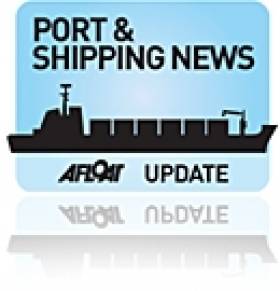Displaying items by tag: iShip Index Q4 2014
Irish Ports & Shipping Volumes Up 7% During Q4 2014
#ShippingVolumes - Irish ports and shipping activity rose by 7% in the fourth quarter of 2014 when compared to the corresponding period of 2013.
The figures released today are from the quarterly iShip Index* published by the Irish Maritime Development Office (IMDO).
The latest analysis also indicates that four of the five principal freight segments grew in the second quarter of 2014.
The Ro/Ro freight segment experienced volume growth of 4% in the fourth quarter to 429,814 units and is the eighth consecutive quarterly increase in Ro/Ro traffic, the majority of which moves between Ireland and Great Britain and is a simple but reliable indicator of the level of trade between both economies.
Container traffic (Lo/Lo) grew by 8% to 157,077 units. Encouragingly, container imports have now risen for five consecutive quarters. Container exports continued to grow, increasing by 4% to 67,888 units.
The overall bulk traffic segment saw tonnage volumes increase by 7% when compared to the previous year. Break bulk, which largely consists of imports of construction and project related commodities, increased by 16%.
Break bulk has now seen seven consecutive quarterly increases. Liquid bulk also rose by 16% and dry bulk increased by 1%, having both experienced negative growth in recent quarters.
For a breakdown of figures for the previous quarter, Q3 of 2014, click HERE
*The iShip index is a volume index for all freight traffic moved to and from the Republic of Ireland. This does not include passengers or trans-shipment activity.
Note: All freight and passenger comparisons are done on a quarterly basis (Q4 2013 v Q4 2014).























